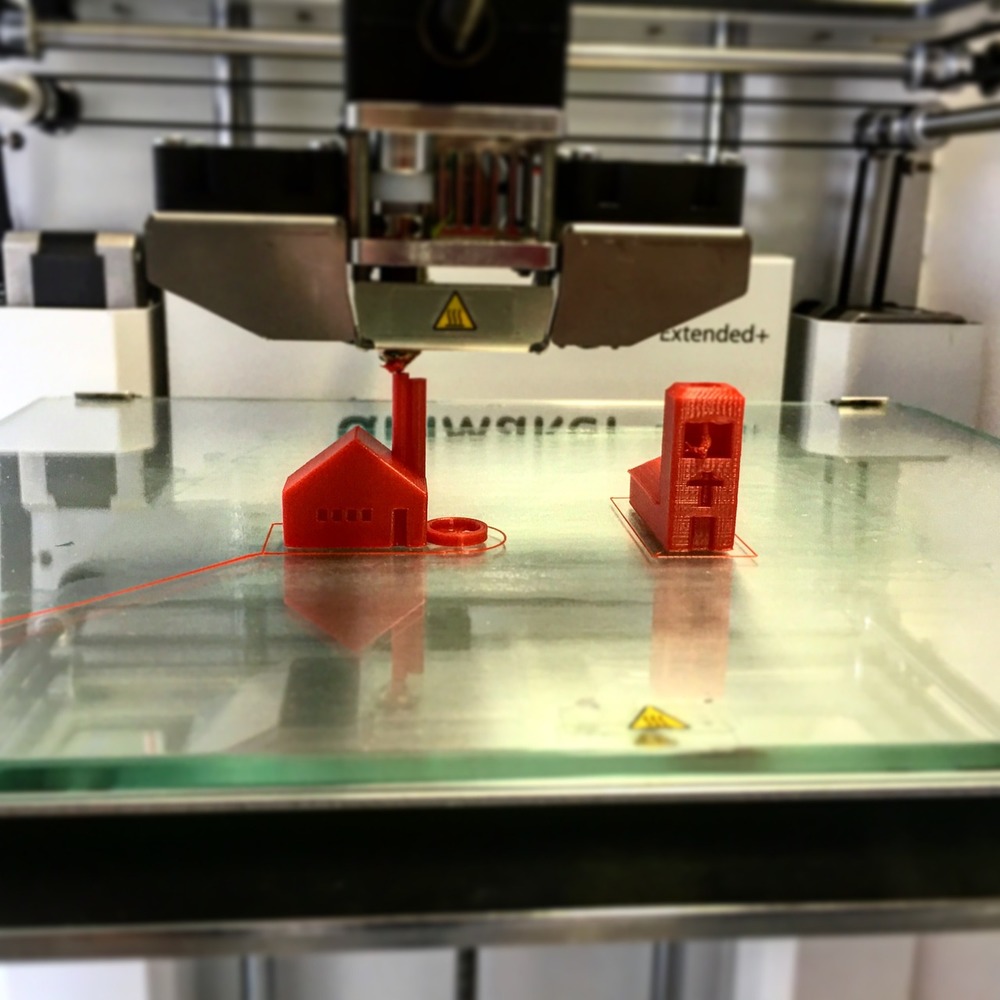We offer you and your projects’ partners a win-win solution based on a solid, long-lasting, fruitful relationship
You outsource the mundane & concentrate on what you do best
This article is part of a blog series in which you can find out how 3D printing is used at the construction site, such as replacing broken parts on construction equipment or even building new houses. We have all heard the buzz around 3D printing in the last ten years but is it merited?
3D printing is successful in the construction sector as the industry is under a lot of pressure to meet tight schedules and budgets. Innovations in 3D printing will help to increase efficiency in the building sector by:

Lean project management, prefabrication, and modular construction, combined with 3D printing can significantly reduce waste in both time and materials, allowing you to achieve sustainable designs, as well as to increase your projects’ profitability, as explained below.
3D printing has the capability to build a home or building in a matter of days compared to conventional construction. You can reduce the time on site by up to 60% and your labor requirement by almost 80%, according to a report on systematic review and analysis of the viability of 3D printed construction in remote environments.
One of the major benefits of 3D printing is that architects can produce complex designs that would not be possible any other way. Conventional construction processes, would be very costly or would require a large labor force and a lot of energy to produce. 3D printing allows you to design and print any shape or pattern.
3D printing can manufacture parts within hours, which speeds up the prototyping process. This allows for each stage of the design to be completed faster. When compared to machining prototypes, 3D printing is inexpensive and quicker at creating parts, allowing for each design modification to be completed at a much more efficient rate.
You can now find 3D printing facilities easily and locally to outsource your prototyping work. You can save time and transport costs compared to traditional manufacturing processes produced in low-cost countries such as China.
It is possible to print on demand - another benefit compared to traditional manufacturing processes - which reduces storage space and costs while you design and build.
You will not need to order large quantities of material unless it is necessary.
Parts can be designed from tailored materials to meet distinct properties like:
The 3D design files are all stored virtually in your computer and printed, using a 3D model as either a CAD or STL file, when required.
Designs can be edited as often as you want, at low costs, without wastage of obsolete inventory and tools investment. More traditional processes have design restrictions that no longer apply with the use of 3D printing.
More than 1 billion tons of waste is generated each year in construction worldwide, and according to Construction Dive, this number is expected to double by 2025. Any little bit of reduction, thanks to 3D printing, can help to solve part of the construction waste problems.
3D printing, an additive manufacturing process, only produces the material that is necessary for building a structure compared to alternative methods which are cut from extensive pieces of non-recyclable materials.
The process also reduces the cost of the materials in your projects.
When used with other waste-reducing processes and building methods like prefabrication and lean BIM management the potential of a waste-zero building seems achievable.
As this technology reduces the amount of material wastage, this process is inherently environmentally friendly. However, the environmental benefits are extended when you consider factors such as improved fuel efficiency from using lightweight 3D printed parts.
According to OSHA, 3.5 per 100,000 full-time equivalent workers are killed on the job each day. Incorporating automated 3D printing that can reduce worker injuries and fatalities, as a human workforce will not be present in a dangerous environment.
3D printing uses a single-step manufacturing process, saving you time and costs vs. conventional construction manufacturing processes, where you are using different machines. 3D printers, once set up, know what they must do, so it does reduce the demand for operators to stay in front of the machine all the time.
As mentioned above, with 3D printing you only use the amount of material required for the part itself, with little or no wastage.

3D printing technology has its own difficulties which you should consider before adopting this process.
3D printing equipment can be expensive to buy, as you must add the cost of materials and maintenance on top. To minimize that capital expenditure, you can:
You may have to weigh 3D printing’s cost over the technology’s benefits before using it, as the logistic to get 3D printers to site is costly.
3D printing mainly uses plastics and metals but not all metals or plastics can be temperature-controlled enough to allow 3D printing. Another drawback is that some printable materials cannot be recycled.
Small chambers in 3D printers restrict the size of parts that can be printed. This can be overcome by printing separate parts and joining them on-site. You will have to make sure that this will not increase costs and time for larger parts before manual labor is used to assemble the parts.
3D printed parts need some form of cleaning to remove support material and to smooth the surface to achieve the required finish.
Before assembling the parts, you may need to:
The required pre-assembly process is dependent on the size of the part, the intended application, and the type of 3D printing technology used in manufacturing. The speed of production can be outweighed by the length of the pre-assembly process.
3D printing unit costs will not be reduced, as much as we are used to seeing in more conventional techniques like injection molding, where large volumes may be more cost-effective to produce.
The setup investment cost in 3D printing is lower than other manufacturing methods, but the unit cost of production is constant and does not reduce as it would with injection molding.
Additive manufacturing parts are produced layer-by-layer, so they can chip under stresses or positions. This problem is exacerbated when producing items, using fused deposition modeling (FDM), with parts made of resin and multiple injections that tend to be breakable. You are advised to consider using injection molding instead as it creates homogenous parts that will not separate and break.
Reduction in the workforce can be seen as a disadvantage of 3D technology, as most of the production is automated and done by printers. This is even more true in third-world countries relying on exporting low-price manufactured products, where the technology could put manufacturing jobs in jeopardy.
The construction sector is growing, but there is a shortage of skilled workers. 3D printing requires very specific skills that can only be found in a small group of candidates. Discovering qualified workers with 3D printing construction skills could be arduous in the future.
3D printing depends on printers with low tolerances, so manufactured parts may differ from the original design, increasing the time and cost of production.
Regulation in 3D printing hasn’t yet fully impacted the construction industry. Until the technology is fully regulated and defined, it is impossible to know what the impact of 3D printing will be.
3D printing could encourage people to create fake and counterfeit products that are almost impossible to detect, creating copyright and quality control issues.

Despite the benefits and potential that 3D printing has in the construction sector, there are elements that may prevent the technology from becoming popular.
The weather, labor, and the environment are elements that could make 3D printing in commercial construction more of a handicap than an improvement. But the demand is growing due to some of the evolutionary benefits it can offer, such as:
Driving Vision's technology appraisal looks at the best way to insert new technology in your workflows and how to move your organization to cloud computing so you can open up new possibilities for your daily planning tasks and make sure your data never leaves the optimally secured data center.
A Driving Vision expert will conduct the interviews online and will discuss with you the issues and our findings in the report. Together we will decide the best way to implement the solutions at your pace and according to your budget.
Implementing BIM can be daunting, but Driving Vision is here to help you at the pace you are comfortable with. Get started by getting in touch now
We act as your BIM coordinator
We Support your BIM IT
We Train & Coach you
We Innovate in Technology
We offer you and your projects’ partners a win-win solution based on a solid, long-lasting, fruitful relationship
You outsource the mundane & concentrate on what you do best
